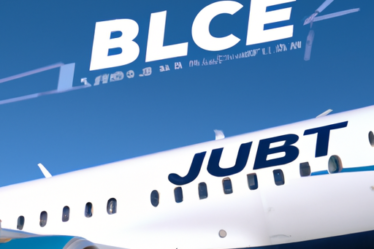
Differentiating Commercial and Military Aircraft: A Comprehensive Guide
Are you fascinated by airplanes? Do you find yourself staring up at the sky, trying to identify the different types of aircraft flying overhead? If so, you’re not alone. Many people share your enthusiasm for aviation and have a desire to learn more about the various types of airplanes that grace our skies. In this comprehensive guide, we will focus on differentiating between commercial and military aircraft, providing you with the knowledge you need to become an expert in distinguishing between these two categories.
Let’s start by discussing commercial aircraft. These are the planes that you are most likely to encounter when traveling by air. Commercial airplanes are designed to transport passengers and cargo from one destination to another. They come in various sizes, ranging from small regional jets to large wide-body aircraft. One of the most recognizable features of commercial airplanes is their distinctive shape, with a long fuselage and wings that are positioned towards the rear of the aircraft. This design allows for maximum passenger capacity and fuel efficiency.
When it comes to military aircraft, there are several key differences that set them apart from their commercial counterparts. The primary purpose of military aircraft is to support military operations, including combat missions, surveillance, and transportation of troops and equipment. Unlike commercial airplanes, military aircraft are built with a focus on speed, maneuverability, and weaponry. They often have sleeker and more streamlined designs, with wings positioned towards the middle or front of the aircraft to enhance agility.
Another important distinction between commercial and military aircraft is their paint schemes. Commercial airplanes typically feature vibrant and eye-catching liveries, with the airline’s logo prominently displayed on the tail and fuselage. In contrast, military aircraft are usually painted in more subdued colors, such as shades of gray or camouflage patterns. This helps them blend into their surroundings and provides a level of protection during combat operations.
In terms of size, military aircraft can vary significantly depending on their intended use. Fighter jets, for example, are relatively small and compact, designed for high-speed aerial combat. On the other hand, transport planes, such as the C-130 Hercules, are much larger and capable of carrying heavy loads over long distances. These planes often have a boxy shape and multiple engines to provide the necessary power for takeoff and landing.
One of the most noticeable differences between commercial and military aircraft is their flight patterns. Commercial airplanes typically follow established air routes and adhere to strict schedules. They take off and land at designated airports, making them predictable and easy to track. In contrast, military aircraft have more flexibility in their flight paths. They can perform aerial maneuvers, fly at low altitudes, and even engage in air-to-air combat. This makes them more challenging to identify and track, adding an element of excitement to spotting military planes.
In conclusion, distinguishing between commercial and military aircraft requires an understanding of their design, purpose, paint schemes, size, and flight patterns. By familiarizing yourself with these key differences, you can become an expert in identifying the various types of airplanes that grace our skies. So, the next time you find yourself gazing up at the sky, take a moment to appreciate the beauty and diversity of the aircraft flying overhead.
Exploring the Key Features of Passenger and Cargo Planes: An In-depth Comparison

Are you fascinated by airplanes? Do you find yourself wondering about the differences between passenger planes and cargo planes? If so, you’ve come to the right place! In this article, we will explore the key features of both types of planes and provide you with an in-depth comparison.
Let’s start by discussing passenger planes. These are the planes that most of us are familiar with, as they are used for commercial air travel. One of the main features of passenger planes is their seating capacity. These planes are designed to carry a large number of passengers, ranging from a few dozen to several hundred. They are equipped with comfortable seats, overhead compartments for storing luggage, and in-flight entertainment systems to keep passengers entertained during their journey.
Passenger planes also have specific safety features that are designed to ensure the well-being of the passengers. These include emergency exits, oxygen masks, and life vests. Additionally, these planes are equipped with advanced navigation systems and communication devices to ensure a smooth and safe flight.
Now, let’s move on to cargo planes. As the name suggests, these planes are primarily used for transporting goods and cargo. Unlike passenger planes, cargo planes do not have seating areas for passengers. Instead, they have a large cargo hold that can accommodate a wide variety of items, ranging from small packages to heavy machinery.
Cargo planes are designed to handle the unique challenges of transporting goods. They have reinforced floors and walls to withstand the weight and movement of the cargo. Additionally, they are equipped with specialized loading and unloading systems, such as cargo doors and ramps, to facilitate the efficient movement of goods.
In terms of size, cargo planes can vary significantly. Some cargo planes are converted passenger planes, while others are specifically designed for cargo transportation. The size of the cargo plane depends on the type and quantity of goods it is intended to carry. Larger cargo planes, such as the Boeing 747-8F, can carry up to 137 tons of cargo, while smaller cargo planes, like the Cessna Caravan, have a maximum payload of around 2 tons.
Another important feature of cargo planes is their range. Since they are often used for long-haul flights, cargo planes are equipped with larger fuel tanks to ensure they can cover long distances without refueling. This allows them to transport goods to destinations all over the world.
In conclusion, passenger planes and cargo planes have distinct features that make them suitable for their respective purposes. Passenger planes are designed to carry a large number of passengers comfortably and safely, while cargo planes are built to transport goods efficiently. Whether you’re a frequent traveler or simply curious about airplanes, understanding the key features of these planes can enhance your appreciation for the world of aviation. So, the next time you see a plane in the sky, take a moment to think about whether it’s a passenger plane or a cargo plane, and marvel at the incredible engineering that makes air travel possible.
Understanding the Variations in Regional and International Airplanes: A Beginner’s Perspective
Are you a beginner in the world of aviation? Do you find it challenging to distinguish between different types of airplanes? Don’t worry, you’re not alone! Understanding the variations in regional and international airplanes can be overwhelming at first, but with a little guidance, you’ll be able to tell them apart in no time.
Let’s start with regional airplanes. These aircraft are designed for shorter flights, typically within a specific region or country. They are smaller in size and have a limited seating capacity compared to their international counterparts. Regional airplanes are commonly used by airlines to connect smaller cities and towns, providing convenient travel options for passengers.
One popular type of regional airplane is the turboprop. These planes are easily recognizable by their distinctive propellers, which are driven by a turbine engine. Turboprops are known for their efficiency and versatility, making them ideal for short-haul flights. They are often used by regional airlines to transport passengers to destinations that may not have a large airport.
Another type of regional airplane is the regional jet. Unlike turboprops, regional jets are powered by jet engines, giving them a faster cruising speed. These planes are slightly larger than turboprops and can carry more passengers. Regional jets are commonly used by airlines to connect larger cities within a region, offering a comfortable and efficient travel experience.
Now, let’s move on to international airplanes. These aircraft are designed for long-haul flights, connecting different countries and continents. They are larger in size and have a higher seating capacity to accommodate a larger number of passengers. International airplanes are equipped with advanced technology and amenities to ensure a comfortable journey for passengers.
One of the most well-known types of international airplanes is the wide-body jet. These planes have a wide fuselage, allowing for multiple aisles and spacious seating arrangements. Wide-body jets are often used by major airlines for long-haul flights, offering amenities such as in-flight entertainment systems, larger overhead compartments, and even lie-flat seats in premium classes.
Another type of international airplane is the narrow-body jet, also known as a single-aisle jet. These planes have a narrower fuselage and are commonly used for both short-haul and medium-haul flights. Narrow-body jets are versatile and can be seen on various routes, connecting different cities around the world. They are known for their efficiency and cost-effectiveness.
It’s important to note that while regional and international airplanes have distinct characteristics, there can be some overlap. For example, some regional airlines may operate narrow-body jets on longer routes, while some international airlines may use regional jets for shorter flights within a region. This flexibility allows airlines to adapt to different market demands and optimize their operations.
In conclusion, understanding the variations in regional and international airplanes is essential for any aviation enthusiast. By familiarizing yourself with the different types of aircraft, such as turboprops, regional jets, wide-body jets, and narrow-body jets, you’ll be able to distinguish between them with ease. Whether you’re embarking on a short regional flight or a long international journey, knowing the type of airplane you’ll be flying on adds an extra layer of excitement to your travel experience. So, next time you’re at the airport, take a moment to appreciate the diversity of airplanes that connect the world.


